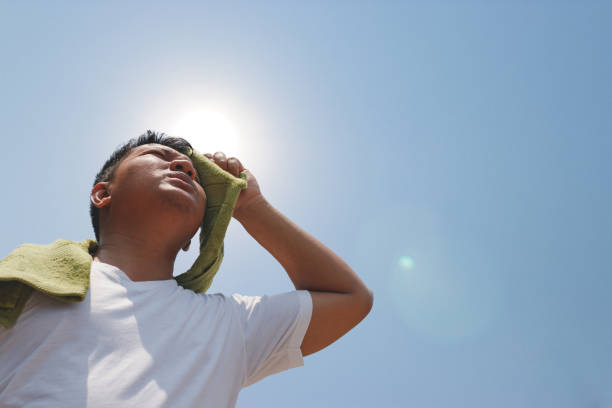Treatment
Immediate treatment of heat stroke is body cooling; currently the preferred method of cooling is evaporation cooling by spraying the patient with cold water or covering them with cold water soaked sheets, and using fans to augment evaporative cooling. Others recommend additional cooling by placing ice packs on the head, neck, armpits, and groin.
In addition, benzodiazepines can be administered to prevent shivering. Often the patient is dehydrated so IV fluids are given. The goal is to reach a core temperature (rectal probe reading with a constant readout) of below 102.2 F or 39 C. The ideal time frame for reaching this temperature is controversial but this should in general be achieved in the fastest possible time frame, ideally over the first 60 minutes. In addition, other supportive measures for breathing, hypotension, and seizures may be required.
Heat stroke is an emergency condition where the body’s core temperature is markedly elevated (depending on who provides the definition, about 104 F [40 C] or above in adults and 105 F or 40.5 C in children) after being exposed to high environmental temperatures combined with neurologic symptoms and loss of body thermal autoregulation (ability of the brain to control the body temperature).
Heatstroke can occur without any previous heat-related condition, such as heat exhaustion. Heatstroke signs and symptoms include:
What Causes Heat Stroke?
The major cause of heat stroke is prolonged exposure to high temperatures and/or doing strenuous activity in hot weather. The body’s ability to control the core temperature (sweating, evaporative cooling, for example) is overwhelmed by heat.
Infants, children, pregnant females and the elderly are at higher risk for heat stroke because they are less able to control their core temperature.
Other causes that can contribute to the condition of heat stroke are:
- Dehydration
- Drinking alcohol
- Dide effects of certain medications (for example, dehydration, increased urination, sweating)
- Wearing excess and/or tight clothing can contribute to causing heat stroke by inhibiting cooling by evaporation.
- Sunburn
What Are the Symptoms and Signs of Heat Stroke?
- Heat stroke usually follows two other heat-related problems; heat cramps and heat exhaustion. These two conditions are marked by muscle cramps followed by exhaustion and profuse sweating.
- As these conditions progress of heat cramps and heat exhaustion progress, a rapid pulse, rapid breathing, dizziness, and headache may occur.
- These symptoms may linger and progress to heat stroke when the body temperature reaches 104 F or 40 C or 105 F and 40.5 C in children, and the body stops sweating.
- In addition to stopping sweating, the skin of a person suffering from a heat stroke is hot and dry, and sometimes becomes a reddish color.
- Stroke-like symptoms occur in heat stroke. Confusion, hallucinations, seizures, loss of consciousness, organ damage, coma, and death can occur if not treated quickly and effectively; mental status changes help differentiate heat exhaustion from heat stroke.
